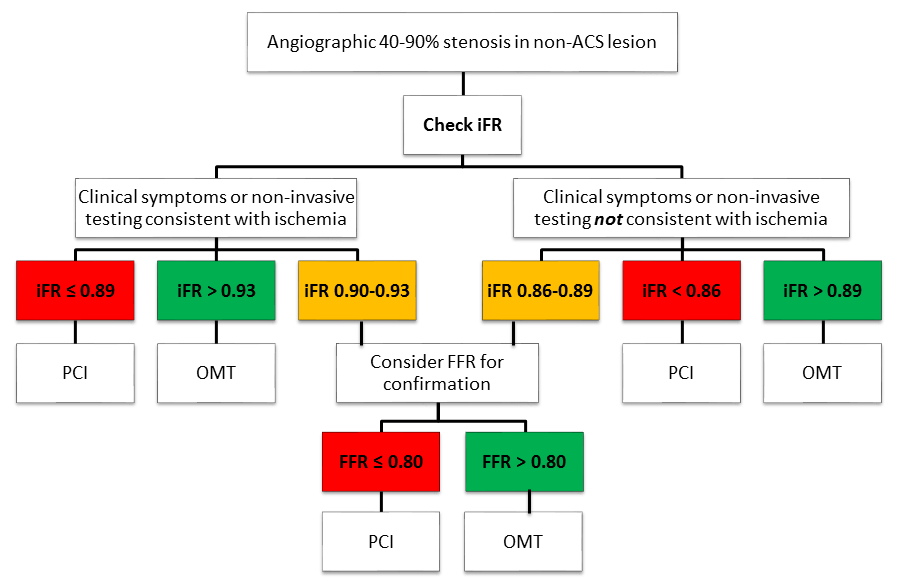[1]
Sanchis-Gomar F, Perez-Quilis C, Leischik R, Lucia A. Epidemiology of coronary heart disease and acute coronary syndrome. Annals of translational medicine. 2016 Jul:4(13):256. doi: 10.21037/atm.2016.06.33. Epub
[PubMed PMID: 27500157]
[2]
Libby P, Theroux P. Pathophysiology of coronary artery disease. Circulation. 2005 Jun 28:111(25):3481-8
[PubMed PMID: 15983262]
[3]
Zhang H, Mu L, Hu S, Nallamothu BK, Lansky AJ, Xu B, Bouras G, Cohen DJ, Spertus JA, Masoudi FA, Curtis JP, Gao R, Ge J, Yang Y, Li J, Li X, Zheng X, Li Y, Krumholz HM, Jiang L, China PEACE Collaborative Group. Comparison of Physician Visual Assessment With Quantitative Coronary Angiography in Assessment of Stenosis Severity in China. JAMA internal medicine. 2018 Feb 1:178(2):239-247. doi: 10.1001/jamainternmed.2017.7821. Epub
[PubMed PMID: 29340571]
[4]
Boden WE, O'Rourke RA, Teo KK, Hartigan PM, Maron DJ, Kostuk WJ, Knudtson M, Dada M, Casperson P, Harris CL, Chaitman BR, Shaw L, Gosselin G, Nawaz S, Title LM, Gau G, Blaustein AS, Booth DC, Bates ER, Spertus JA, Berman DS, Mancini GB, Weintraub WS, COURAGE Trial Research Group. Optimal medical therapy with or without PCI for stable coronary disease. The New England journal of medicine. 2007 Apr 12:356(15):1503-16
[PubMed PMID: 17387127]
[5]
Zimmermann FM, Ferrara A, Johnson NP, van Nunen LX, Escaned J, Albertsson P, Erbel R, Legrand V, Gwon HC, Remkes WS, Stella PR, van Schaardenburgh P, Bech GJ, De Bruyne B, Pijls NH. Deferral vs. performance of percutaneous coronary intervention of functionally non-significant coronary stenosis: 15-year follow-up of the DEFER trial. European heart journal. 2015 Dec 1:36(45):3182-8. doi: 10.1093/eurheartj/ehv452. Epub 2015 Sep 23
[PubMed PMID: 26400825]
[6]
Tonino PA, De Bruyne B, Pijls NH, Siebert U, Ikeno F, van' t Veer M, Klauss V, Manoharan G, Engstrøm T, Oldroyd KG, Ver Lee PN, MacCarthy PA, Fearon WF, FAME Study Investigators. Fractional flow reserve versus angiography for guiding percutaneous coronary intervention. The New England journal of medicine. 2009 Jan 15:360(3):213-24. doi: 10.1056/NEJMoa0807611. Epub
[PubMed PMID: 19144937]
[7]
Hwang D, Jeon KH, Lee JM, Park J, Kim CH, Tong Y, Zhang J, Bang JI, Suh M, Paeng JC, Na SH, Cheon GJ, Cook CM, Davies JE, Koo BK. Diagnostic Performance of Resting and Hyperemic Invasive Physiological Indices to Define Myocardial Ischemia: Validation With (13)N-Ammonia Positron Emission Tomography. JACC. Cardiovascular interventions. 2017 Apr 24:10(8):751-760. doi: 10.1016/j.jcin.2016.12.015. Epub 2017 Mar 29
[PubMed PMID: 28365268]
Level 1 (high-level) evidence
[8]
Götberg M, Christiansen EH, Gudmundsdottir IJ, Sandhall L, Danielewicz M, Jakobsen L, Olsson SE, Öhagen P, Olsson H, Omerovic E, Calais F, Lindroos P, Maeng M, Tödt T, Venetsanos D, James SK, Kåregren A, Nilsson M, Carlsson J, Hauer D, Jensen J, Karlsson AC, Panayi G, Erlinge D, Fröbert O, iFR-SWEDEHEART Investigators. Instantaneous Wave-free Ratio versus Fractional Flow Reserve to Guide PCI. The New England journal of medicine. 2017 May 11:376(19):1813-1823. doi: 10.1056/NEJMoa1616540. Epub 2017 Mar 18
[PubMed PMID: 28317438]
[9]
Berry C, van 't Veer M, Witt N, Kala P, Bocek O, Pyxaras SA, McClure JD, Fearon WF, Barbato E, Tonino PA, De Bruyne B, Pijls NH, Oldroyd KG. VERIFY (VERification of Instantaneous Wave-Free Ratio and Fractional Flow Reserve for the Assessment of Coronary Artery Stenosis Severity in EverydaY Practice): a multicenter study in consecutive patients. Journal of the American College of Cardiology. 2013 Apr 2:61(13):1421-7. doi: 10.1016/j.jacc.2012.09.065. Epub 2013 Feb 6
[PubMed PMID: 23395076]
Level 2 (mid-level) evidence
[10]
Jeremias A, Maehara A, Généreux P, Asrress KN, Berry C, De Bruyne B, Davies JE, Escaned J, Fearon WF, Gould KL, Johnson NP, Kirtane AJ, Koo BK, Marques KM, Nijjer S, Oldroyd KG, Petraco R, Piek JJ, Pijls NH, Redwood S, Siebes M, Spaan JAE, van 't Veer M, Mintz GS, Stone GW. Multicenter core laboratory comparison of the instantaneous wave-free ratio and resting Pd/Pa with fractional flow reserve: the RESOLVE study. Journal of the American College of Cardiology. 2014 Apr 8:63(13):1253-1261. doi: 10.1016/j.jacc.2013.09.060. Epub 2013 Nov 6
[PubMed PMID: 24211503]
[11]
Coughlan JJ, MacDonnell C, Arnous S, Kiernan TJ. Fractional flow reserve in 2017: current data and everyday practice. Expert review of cardiovascular therapy. 2017 Jun:15(6):457-472. doi: 10.1080/14779072.2017.1327810. Epub 2017 May 15
[PubMed PMID: 28475383]

